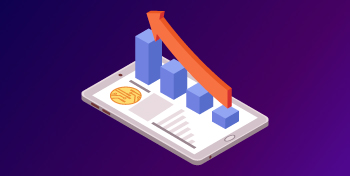Looking back, the growth of cryptocurrencies seems to have started with the advent of Bitcoin in 2009. Earlier cryptocurrencies were launched in the 1990s but they didn’t catch on.
David Chaum’s DigiCash is believed to be ahead of its time. Chaum founded his company long before the advent of e-commerce. By 1998, it had declared bankruptcy. “More generally, the first digital money firms made a fatal miscalculation”, Julia Pitta wrote for Forbes in 1999. They mistakenly believed that consumers were suspicious of using credit cards online, and would demand strict security measures and iron-clad privacy.
At first, it was unclear whether Bitcoin would be any different. Perhaps fearing the fate of the creator of electronic gold, Douglas Jackson, the creator (or creators) Bitcoin took the pseudonym, now known as Satoshi Nakamoto, and shared the open source project via email in the Cryptography List mailing list on January 8, 2009. Nakamoto had distributed an official document explaining the technical details months before. Congratulatory responses soon followed, but there was little sign that Bitcoin would quickly become famous. It was nothing more than a novelty that was discussed on the Internet by a handful of programmers.
For the next nine months, Bitcoin was virtually worthless. The transactions consisted of simple tests conducted by several programmers interested in Bitcoin at the time to correct errors in the protocol. No one transferred valuable goods or services for Bitcoin. There were no market exchange rates for the dollar, euro, or other currencies. Indeed, there were no resources available to facilitate currency exchange.
The first transaction with a positive price for the MTC occurred in early October 2009. On October 5, a user using the name New Liberty Standard estimated that the production of 1309.03 WTS cost about $1. Seven days later, he bought 5,050 coins from Marty Malmi for $5.05, paying for the transaction via PayPal. In other words, the price of the future king of the cryptocurrency space was only $0.0010.
Until March 2010, users interested in exchanging traditional currencies for Bitcoin were limited to special exchanges, usually organized through bulletin boards. Then, on March 16, the Bitcoin market began to work, which became the central place on the Internet for exchanging a crypto asset for dollars. The first application submitted by the creator of the site dwdollar, stated that the price of the Cue ball is $0.0067.
In addition to helping users purchase or sell Bitcoins, the first crypto exchange also made it easier to estimate the exchange value of a crypto asset. If you know, for example, that a lot of users are willing to pay between $0.50 and $0.75 for 100 Bitcoins, you can use this information to find out how many other goods and services that are usually priced in dollars are worth in terms of BTC. Thus, the new exchange made it easier for users to buy and sell goods and services for Bitcoins.
On May 22, 2010, a programmer from Florida, named Laszlo Hanec, made what many consider to be the first purchase of goods or services for Bitcoin. In a post on the BitcoinTalk forum on May 18, Hanets offered to buy two pizzas for 10,000 Bitcoins. The implicit exchange rate was generous. At the time, the Bitcoin market valued 10,000 BTC at about $ 41.
But at first there were no takers. “I just think it would be interesting if I could say I paid for the pizza in Bitcoin”, Hanets wrote on May 21. The next day, he posted photos of two large pizzas from Papa John’s. Together, he and a user named jercos, who facilitated the transaction, showed that Bitcoin can be used to purchase goods and services in the real world.
As rumors of the groundbreaking cryptocurrency spread, so did its value. The Slashdot article, published on July 11, introduced Bitcoin to many new users. The exchange rate rose from $0.008 on July 12 to $0.080 on July 17. On July 18, Jed McCaleb launched the popular MtGox exchange site, and by November 6, one BTC was trading on it for $0.50. Keir Thomas unveiled Bitcoin for PC World on December 10. “Bitcoin is worth paying attention to”, he wrote. In the years that followed, many people did.
On December 3, 2013, one BTC cost $1,078.
Bitcoin Payment Mechanism

Today, few people have not heard of Bitcoin. And yet, it seems that few people understand how it works. Perhaps that was to be expected. The way the Bitcoin protocol processes transactions is new, and fundamentally different from traditional payment mechanisms. While traditional payment mechanisms use decentralized or centralized clearing mechanisms, bitcoin transactions are processed through a distributed clearing mechanism.
Let’s look at the example with cash. When you pay for a drink in cash, the transaction is confirmed by you and the seller. You deduct rubles from your account and transfer them to the seller. The seller credits his account by accepting rubles from you and placing them in the cash register. Since the cash is physical and no longer in your possession, you can’t spend it again. These rubles now belong to the merchant, who can spend them as he sees fit.
In other words, cash is processed using a decentralized clearing mechanism. The decentralized payment is confirmed by the exchange parties. No trusted third party is required to process the transaction. Indeed, no one other than the parties to the transaction even needs to know that the transaction has occurred.
Suppose, instead, you had to buy a drink using a debit card. In this case, your bank debits your account, and transfers the funds to the merchant’s bank. The seller’s bank credits her account. The funds in this case are digital. Unlike physical money, digital balances can be duplicated and spent again. However, the banking system usually prevents this. Once the funds have been transferred, they are considered final – meaning that the sender no longer has access to the funds.
Bitcoin uses neither a decentralized nor a centralized clearing mechanism. Instead, it processes transactions using a distributed clearing mechanism. In distributed clearing, payments are processed by the network as a whole. Typically, distributed networks are a shared registry that denotes who owns what, and a protocol for updating that registry. In many cases, any individual user can debit and credit accounts in the ledger. However, changes to the registry are recognized as legal only after they have been confirmed by the user network in accordance with the protocol.
If you paid for this drink with Bitcoin, you would announce the transaction on the network, signing the balance of the BTC with your private key, thereby confirming ownership, and identifying the seller by its public key. In practice, this often comes down to scanning a QR code using the bitcoin wallet mobile app. Your transaction is then combined with other recent transactions and the computers running the Bitcoin protocol race to process the entire transaction block. After processing a block of transactions, the registry is updated to reflect the various debits and credits required for transactions in the block.
The shared ledger is known as the blockchain because each block of transactions is linked to the previous block, creating a long chain of transaction blocks corresponding to all transactions that have been executed and certified as legitimate up to that point.
While it’s convenient to think of a single shared registry or blockchain showing how much Bitcoin is in each account, there are actually multiple versions of this shared registry at any given time. The Bitcoin protocol solves this problem by recognizing the longest blockchain as legitimate. As a result, those who use the protocol usually abandon shorter blockchains in order to build the longest block chain. Any transaction that was included in the shorter blockchain, but not in the longer, legitimate blockchain, is added to the next block of transactions for processing.
Recall that with cash, you don’t have to worry about the balance being spent more than once, as spending requires giving up ownership of the physical asset. By using checks and debit cards, a bank or banking system guarantees that ownership of a digital asset will be terminated after it is used. The combination of the two features of the Bitcoin protocol prevents double spending.
First, processing transactions is computationally difficult. To add a transaction block to the block chain, the computer must first find the input corresponding to the given hashed output. Since the brute force method is the best that any computer can do, each computer has a random chance to be the first to process a batch of transactions, proportional to its share of the computing power of the bitcoin system.
Second, as noted above, the Bitcoin protocol recognizes the longest blockchain as legitimate. Hence, to perform a double spend, not only does it need to recognize the illegal transaction as legitimate, it will also have to continue processing transactions at a higher rate than the rest of the network so that the blockchain supporting its illegal transaction remains the longest. Unless the user is using most of the system’s computing power, such a feat would be incredibly unlikely.
The blockchain technology underlying Bitcoin provides a new and fundamentally different way to process payments. It does not rely on either decentralized or centralized clearing. Instead, it processes transactions on a distributed network. And, by solving the problem of double spending without resorting to a trusted third party, it can offer a degree of financial privacy comparable to decentralized payment mechanisms such as cash. For these reasons, Bitcoin has gained a lot of support and popularity.
It remains to be seen whether it will become commonplace in retail transactions, whether it will remain restricted to niche use, or even abandon it altogether, but the fact that Bitcoin has become digital gold and the king of cryptocurrencies is probably already known by most of humanity.


